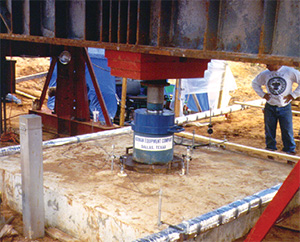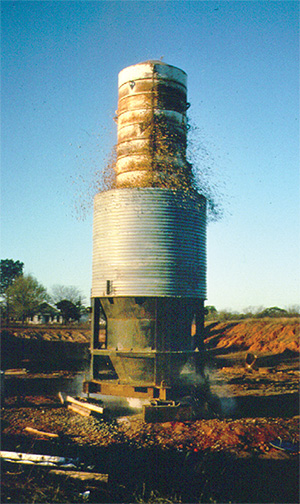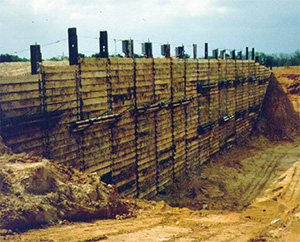In 1978, Jean-Louis Briaud, a recent arrival at Texas A&M University, heeded the advice of Dr. Karl Terzaghi. Considered the father of soil mechanics, Terzaghi said that the action in geotechnical engineering occurs in the field. With the assistance of Texas A&M researchers Harry Coyle and Richard Bartoskewitz, Briaud began conducting full-scale testing of how structures and soils interact at the University’s Riverside Campus.
In the late 1980s, the Federal Highway Administration and the National Science Foundation were searching for sites with known soil characteristics for their National Geotechnical Experimentation Sites (NGESs). Two sites were finally selected for major funding: one at Texas A&M and one at the University of California, Berkeley. Today, only the Texas A&M site remains.
The Texas A&M facility’s 40 feet of medium-dense sand and 40 feet of stiff clay sites are perfect for researchers to conduct full-scale studies of drilled shafts, retaining walls, shallow and deep foundations, and tie-back walls.
“We know the soil very well. That’s what people like. They can come here without having to redo soil testing,” says Briaud, now manager of the Texas A&M Transportation Institute’s Geotechnical and Geoenvironmental Program and professor in Texas A&M’s Civil Engineering Department.
Briaud just finished a study for the Texas Department of Transportation (TxDOT) titled Interaction Between Drilled Shafts and Mechanically Stabilized Earth Walls. Bridge abutments are sometimes built through mechanically stabilized walls on drilled shaft supports. TxDOT wanted to know if bridge loads could exert undesirable pressure on the wall when the drilled shaft moves toward the retaining wall.
“As a result, we now know how to design a retaining wall to resist the pressure exerted on it by a drilled shaft support,” explains Briaud. “There was not a standard for this before. As a result, the drilled shaft support can be smaller than is currently designed because of the strength of the retaining wall, which saves money.”
The list of sponsors using the NGES reads like a who’s who of geotechnical research. While one-third come from Texas A&M, two-thirds hail from around the world, making it a truly international site.
Because regulations require a Texas A&M representative to be at the site during project work, the University’s engineering students benefit from investigations conducted at the NGES. Besides working with instrumentation and drill rigs, students also assist geotechnical researchers performing state-of-the-art studies.
“They see and learn,” says Briaud. “It has a big impact on them.”



